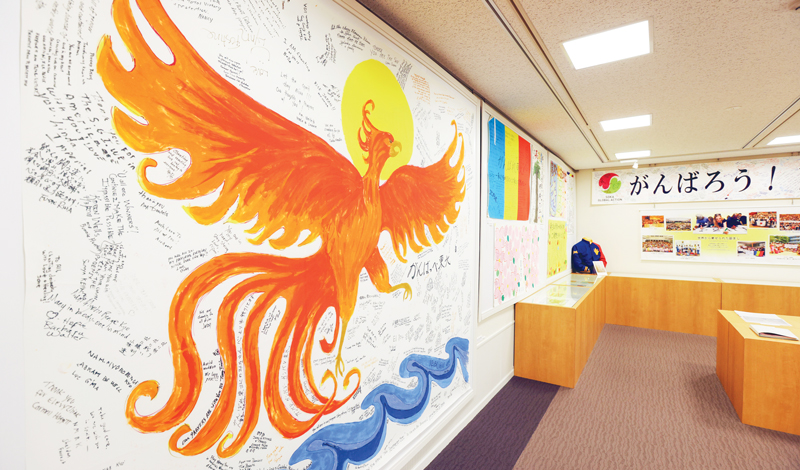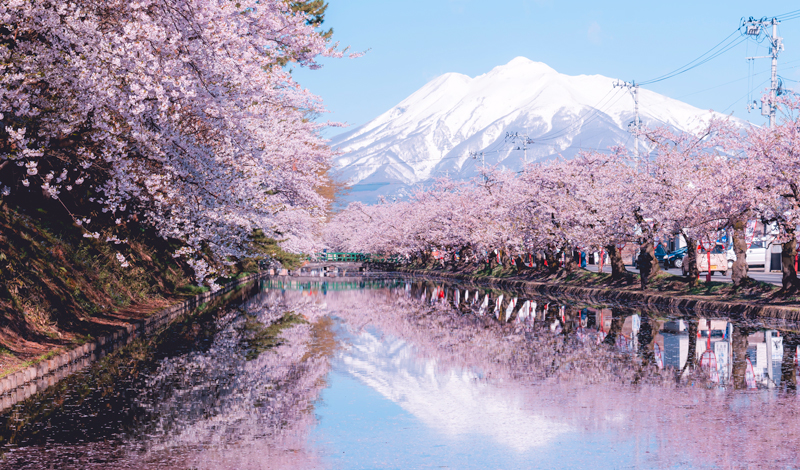This essay by Ikeda Sensei was published in the March 27, 2023, issue of the Soka Gakkai’s daily newspaper, Seikyo Shimbun. Part one is published in the May 3, 2023, World Tribune.
This March marks the 12th anniversary of the devastating March 2011 Tohoku earthquake and tsunami. I wish to offer my sincerest prayers once again for all who lost their lives in the disaster.
Our youth in Tohoku are energetically taking the lead in ongoing efforts to rebuild and restore the region. Noteworthy are the various seminars they are holding to communicate lessons from the disaster to the next generation.[1]
Those who were first graders at the time of the disaster are now young adults. How inspiring it is to see the growth and accomplishments of these bright-eyed youth. I am profoundly grateful to their parents and seniors in faith for the unimaginable care and effort they have put into nurturing and watching over their growth.
Dr. Sarah Wider, former president of the Ralph Waldo Emerson Society in the United States, has been a steadfast friend and supporter of our Tohoku Soka family in the aftermath of the earthquake and tsunami. This year, she sent them another heartfelt message. The strength of friendships forged during the greatest difficulties, she said, gives courage and hope to a world in need of deep attention, connection and care. She also said she was deeply inspired by the Tohoku members’ determination to turn poison into medicine, their efforts showing the world that the worst can be transformed.
Our prayers and actions constitute a pioneering effort to cultivate the earth of the people’s spirit, and a revolution to make the jeweled trees of peace, culture and education flourish bountifully on that rich foundation.
The educator Nitobe Inazo (1862–1933), who hailed from Tohoku and was an acquaintance of Tsunesaburo Makiguchi, wrote in the spring month of March, “Plants with strong roots produce beautiful flowers and bounteous fruit.”[2] The roots of friendship that our noble members, sharing joys and hardships, have laid down in their communities are now producing the flowers of trust and the fruit of connection and solidarity.
The cherry blossoms appeared early in Japan this year, in time for the graduation ceremonies at the Soka schools, Soka University and Soka Women’s College.[3]

Our young friends in the future division and the student division, as well as new graduates entering the workforce for the first time have all patiently weathered the challenges of the COVID-19 pandemic over the past few years. My wife and I are praying each day that they will continue to grow resiliently like young cherry trees as they embark on new beginnings.
Just outside the Hall of the Great Vow for Kosen-rufu in Shinanomachi, Tokyo, proudly stands the Youth Cherry Tree, which is almost the same age as the Soka Gakkai. The trunk near the tree’s base is probably two arm spans in circumference, its timeworn furrows and grooves resembling smile wrinkles. Carefully tended by sincere “cherry tree guardians,” it still blooms with eternal youth and watches over our visitors like a loving mother.
The Youth Cherry Tree could also be called the Mother Cherry Tree or the Many Treasures Cherry Tree. This is because it reminds me of the women of Soka as well as our wonderful Many Treasures Group members throughout Japan and the world who deftly engage in dialogue for peace and human happiness, bringing flowers of encouragement, hope, benefit and triumph to bloom.
Our prayers and actions constitute a pioneering effort to cultivate the earth of the people’s spirit, and a revolution to make the jeweled trees of peace, culture and education flourish bountifully on that rich foundation.
Soka Gakkai founding President Tsunesaburo Makiguchi lived with the vibrant life force of the Youth Cherry Tree in full bloom. He cherished the words “If you renew yourself for one day, you can renew yourself daily, and continue to do so.”[4]
Inspired by these favorite words of Mr. Makiguchi, I embarked on a new challenge when I turned 70. In addition to my serialized novel The New Human Revolution, I began writing an essay series titled “Thoughts on The New Human Revolution” (starting in January 1998).
In the past quarter century since then, I have written a number of essay series under various titles. This is the 800th essay I have written to date. I am profoundly grateful for the support of my readers over these many years.
That number was reached by steadily continuing to write one essay after another. Nichiren Daishonin notes: “One added to one becomes two, two becomes three, and so on to make ten, a hundred, a thousand, ten thousand, a hundred thousand, or an asamkhya.[5] Yet ‘one’ is the mother of all” (“The Blessings of the Lotus Sutra,” The Writings of Nichiren Daishonin, vol. 1, p. 667).
These words also remind me in particular of the tireless efforts of our members, Bodhisattvas Never Disparaging of Soka, who engage in sincere and openhearted dialogue day after day, with one person after another, in the spirit of showing the deepest respect for the Buddha nature of each individual.
In The Record of the Orally Transmitted Teachings, Nichiren Daishonin says, “It is like the situation when one faces a mirror and makes a bow of obeisance: the image in the mirror likewise makes a bow of obeisance to oneself” (p. 165).
The tireless grassroots efforts in dialogue by our Soka family are, like a bright mirror, sending the great light of respect for the dignity of life and all people out into society and the world.
With this 800th essay as a new starting point, I am determined to continue writing—guided by the occasion and where my pen takes me—earnestly praying that all our members around the world will enjoy a glorious future.
Incidentally, the number 800 appears in this passage from Nichiren’s writing “Many in Body, One in Mind”: “King Chou of Yin led seven hundred thousand soldiers into battle against King Wu of Chou and his eight hundred men. Yet King Chou’s army lost because of disunity [literally one in body, many in mind] while King Wu’s men defeated him because of perfect unity [literally many in body, one in mind]” (WND-1, 618). During the Osaka Campaign,[6] the members and I engraved these words in our hearts as we strove to make the impossible possible.
No matter how steep and difficult the path forward, we have the “strategy of the Lotus Sutra” (WND-1, 1001) with which to accomplish all our goals. We have fellow members, comrades in our shared struggle for truth and justice in whom we can place our absolute trust. In challenging times especially, we encourage one another, bring forth the courage of a lion king and demonstrate the power of our unbreakable unity.
Making the most of our own unique qualities, let us continue to expand our network of like-minded friends and achieve resounding victories for a better world by working together harmoniously, positively and joyfully in the spirit of “many in body, one in mind.” Let us cause the cherry trees of Soka to bloom triumphantly in the places where we have chosen to fulfill our mission, as symbols of hope for a brilliant future where respect for the dignity of life prevails and all humanity lives in harmony and peace.
May 12, 2023, World Tribune, pp. 2–3
References
- These seminars are part of the Soka Global Action 2030 peace initiative created by the youth division in Japan. A seminar held in Sendai on March 20, 2023, featured a session titled “Thinking About Peace From Tohoku.” ↩︎
- Translated from Japanese. Nitobe Inazo, Nitobe Inazo zenshu (The Collected Works of Nitobe Inazo), edited by the Nitobe Inazo Collected Works Editorial Committee, vol. 8 (Tokyo: Kyobun-kan, 1970), p. 437. ↩︎
- In Japan, school graduations take place in March and the new school year begins in April. ↩︎
- Confucius, The Great Learning, translated by A. Charles Muller, <http://www.acmuller.net/con-dao/greatlearning.html> (accessed on April 27, 2023). ↩︎
- Asamkhya: A numerical unit of ancient India used to indicate an exceedingly large number. ↩︎
- Osaka Campaign: In May 1956, the Osaka members, uniting around a young Daisaku Ikeda, who had been dispatched by second Soka Gakkai President Josei Toda to support them, increased their chapter’s membership by 11,111 households in a single month. ↩︎
You are reading {{ meterCount }} of {{ meterMax }} free premium articles

